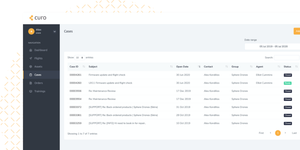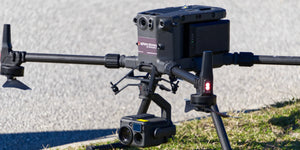A subsea ROV can be used anywhere that a diver can reach. Situations that are (possibly) unsafe for divers can be inspected with an ROV. This does not mean that a ROV needs to take over all the inspections from a diver! An ROV can also be used for a pre-dive inspection. With this inspection, a diving area can be declared safe, thus providing certainty about the situation of the diver.
The diver can also be monitored with the subsea ROV. By keeping the diver in sight at all times, he can be helped from the shore by pointing out dangers that the diver has not seen. It is also possible to keep an eye on the line to which the diver is attached; if the diver gets stuck on something, it is easy to see this with an extra pair of eyes underwater.
Improving safety underwater also increases the chance of a successful inspection. This often means that safety above water is also better. There are far fewer uncertainties, and assets can be thoroughly inspected. Assets with a bad state of repair can be maintained in time.
Underwater accessibility with an ROV
There is also a safety element in accessibility! Professional divers may be able to dive deep, but because of decompression sickness they need a lot of time to get back to the surface. It can therefore happen that an inspection is not finished and must be carried out in several parts.
An ROV works on batteries, which can last up to 8 hours! So, inspections underwater can be carried out for much longer. And in case the batteries of the subsea ROV or the controller run out, they can be charged or exchanged for spare batteries in 3 minutes. So, you can get back to inspecting in no time.
Also, an ROV is much less limited to a maximum depth! Often the maximum depth depends on the length of the cable. Some ROVs can dive up to 300 metres deep! Something that is not applicable in Dutch waters!
When it comes down to it, what would you rather have?
-
An accident with an ROV, resulting in financial loss.
-
An accident with a diver, resulting in serious injuries or worse…
You can send an ROV into any situation, in the worst case it will cost you money. So, you never put people’s lives at risk!
See up to sixty metres ahead in murky water?
Visibility is the most important thing in a successful inspection! Logically, to inspect you need to be able to see something.
But often the visibility underwater is quite poor, especially close to the bottom. If visibility is less than one metre, an inspection will take an exceptionally long time and there is a good chance that crucial points will be missed. Certainly, matters that can only be measured at a greater distance require good visibility.
But when it is not there? Then you see just as little with an ROV as with a diver. The camera is of 4k quality, which is good. But this camera cannot see through mud, just as the eyes of a human cannot.
Our ROVs can be equipped with sonar! With the sonar, a full inspection can still be carried out in waters with poor visibility. The sonar can even be set to look 60 metres ahead. (This is further than the length of an Olympic swimming pool!). In this way, an inspection where a wider spectrum is needed can be carried out properly.
The sonar can be viewed live, and adjustment during an inspection is therefore always possible. Have you spotted something striking or abnormal on the sonar? Then you can always sail to the location and switch to the camera to get a close-up view. By regularly switching between sonar and camera, you always have the right image with you!
In short: An ROV offers safety, security, can handle large jobs and always has visibility!
This makes a subsea ROV often the right choice for your job. Which subsea ROV is most suitable? That depends entirely on your field of work. We will be happy to discuss the possibilities with you, and look for the best options, even if this means that you do not need certain options.
Image: Deep Trekker



















